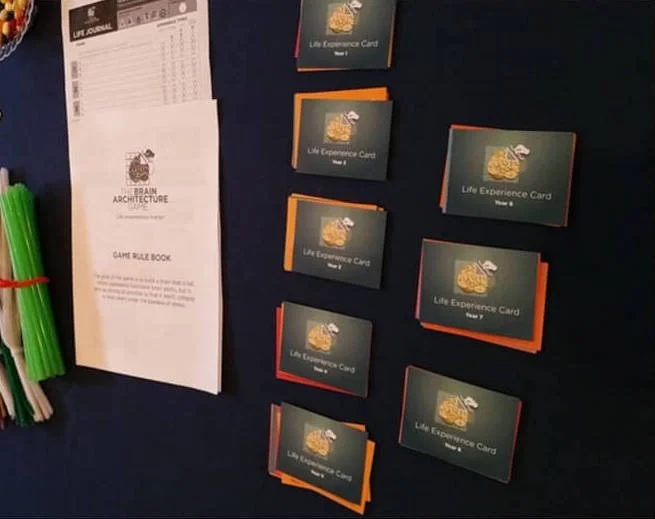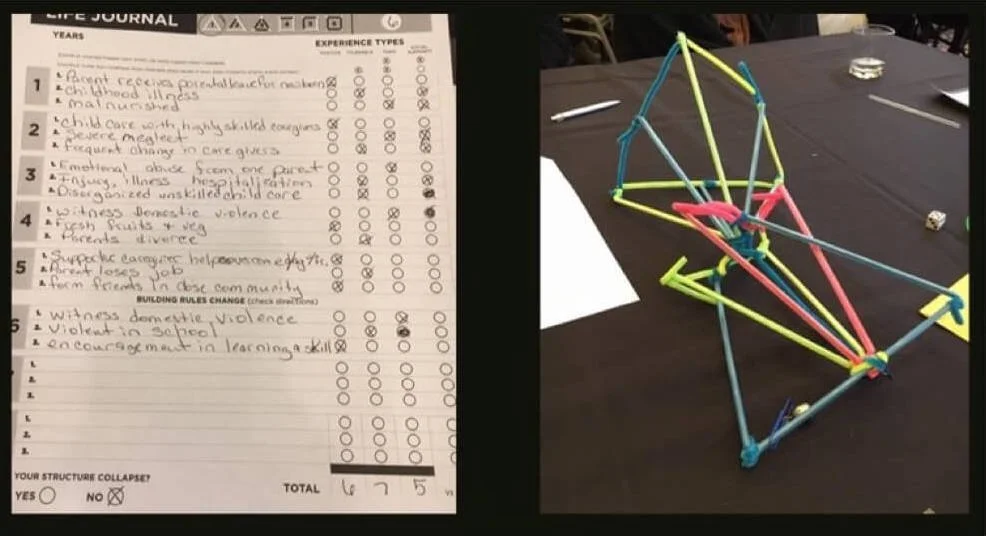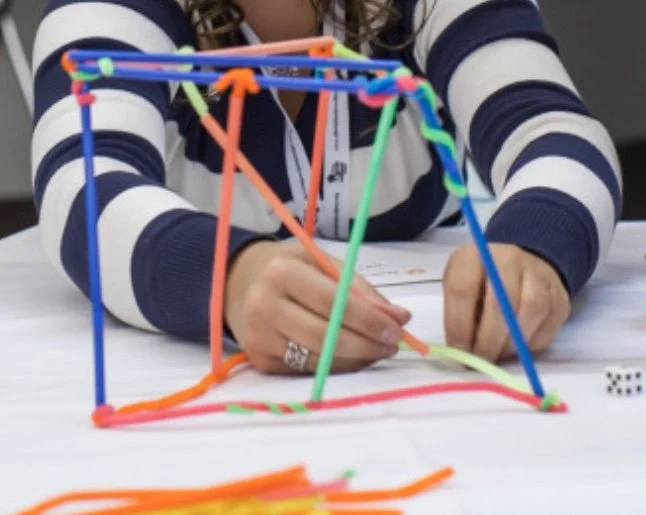Goals
Replace physical tools with intuitive digital interactions
Support in-person and remote gameplay
Simplify setup and scoring to promote discussion
Enable multilingual play and content customization
Capture gameplay data to support ongoing research
Complete the project within a 12-week timeline
Before: Game materials including pipe cleaners, instructions, score sheet/journals, and playing cards.
Before: Keeping score and journaling was a manual process as participants built their “brains.”
Before and After: the component that didn’t change in the digital transformation was the supply kit needed to construct the “brain.” This was something that could be purchased or sourced using a DIY checklist.
Process
I led UX design across three platforms:
Android app for participants [view app wireframes]
Web app for moderators [view moderator wireframes]
Web admin tool for setup and customization [view admin wireframes]
In this role, I:
Oversaw design direction, stakeholder alignment, and team coordination
Managed UI and development contractors and facilitated cross-functional collaboration
Conducted discovery sessions with creators and stakeholders
Analyzed the physical game to understand flow and engagement
Defined user stories for Participants, Moderators, and Admins
Delivered interactive wireframes across three platforms in two weeks
Managed contractors and oversaw visual design, specifications, and QA
Conducted UI design challenges on TopCoder, a crowdsourcing platform that enables capacity
Partnered with developers to ensure design integrity and flow across environments
Taking inventory of all the components needed for game facilitators and admins.
Evaluating requirements vs. logistics vs. participant expectations for seamless gameplay.
Exploring mobile app user flows using low-fidelity wireframes.
Interactive wireframe for admin website.
Interactive wireframe for moderator website.
Interactive wireframe for participant mobile app.
Result
Our team launched all three platforms on time and on budget
Received client praised the platform's ease of use and adaptability
Increased participation and lowered barriers to access for facilitators and players
Helped enable remote and hybrid gameplay during the pandemic, though changes were made along the way since its launch
Preserved the game’s collaborative and reflective nature in a digital format
Designed flexible systems for teams ranging from 4 to 300 players
Developed tools for live moderator support and customizable content
Delivered a multilingual-ready platform used in research and training worldwide
Finished mobile app screens: Joining a session, choosing dice settings, and learning the rules.
Finished mobile app screens: Selecting a card, following the prompts for building the “brain” and taking a photo to record and share progress.
Finished mobile app screens: Facilitator view of teams’ status and progress details.
Finished desktop moderator screens: managing digital game materials.
Finished desktop moderator screens: managing the discussion cards library.
Finished desktop moderator screens: adding training videos.


